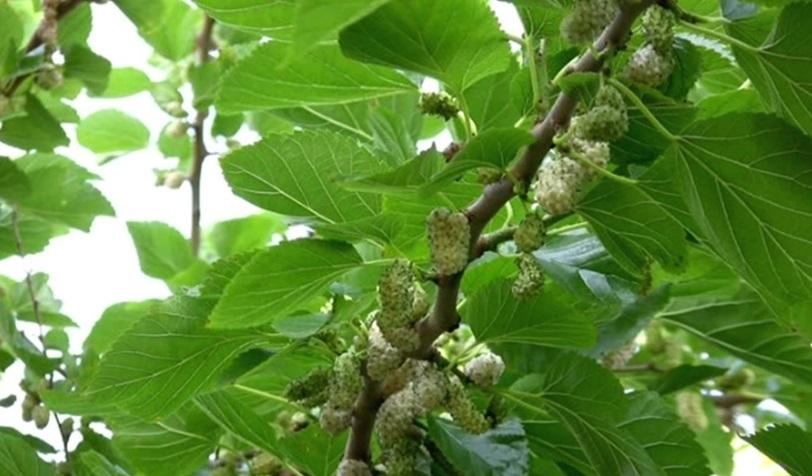Natural Diabetes Medicine: Mulberry Leaf Extract
Mulberry Leaf Extract (MLE) or Morus alba L, a naturally occurring compound, is now being considered as natural diabetes medicine for controlling postprandial hyperglycemia (PPH). It is being recognized for its unique mechanism of action and evidence-based benefits in type 2 diabetes care.1-3
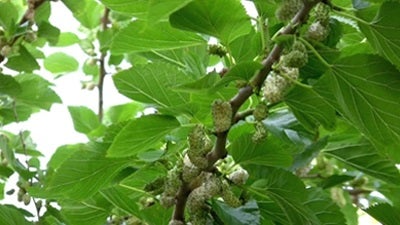
How Mulberry Leaf Extract (MLE) Works
MLE originated from traditional Chinese medicine and contains a sugar analogue: 1-deoxynojirimycin (1-DNJ) as illustrated in figure 1. This active ingredient blocks carbohydrate digestion, thereby regulating blood sugar levels.1 As a result, MLE helps lower post-meal blood glucose and insulin spikes, contributing to better glycemic control.2
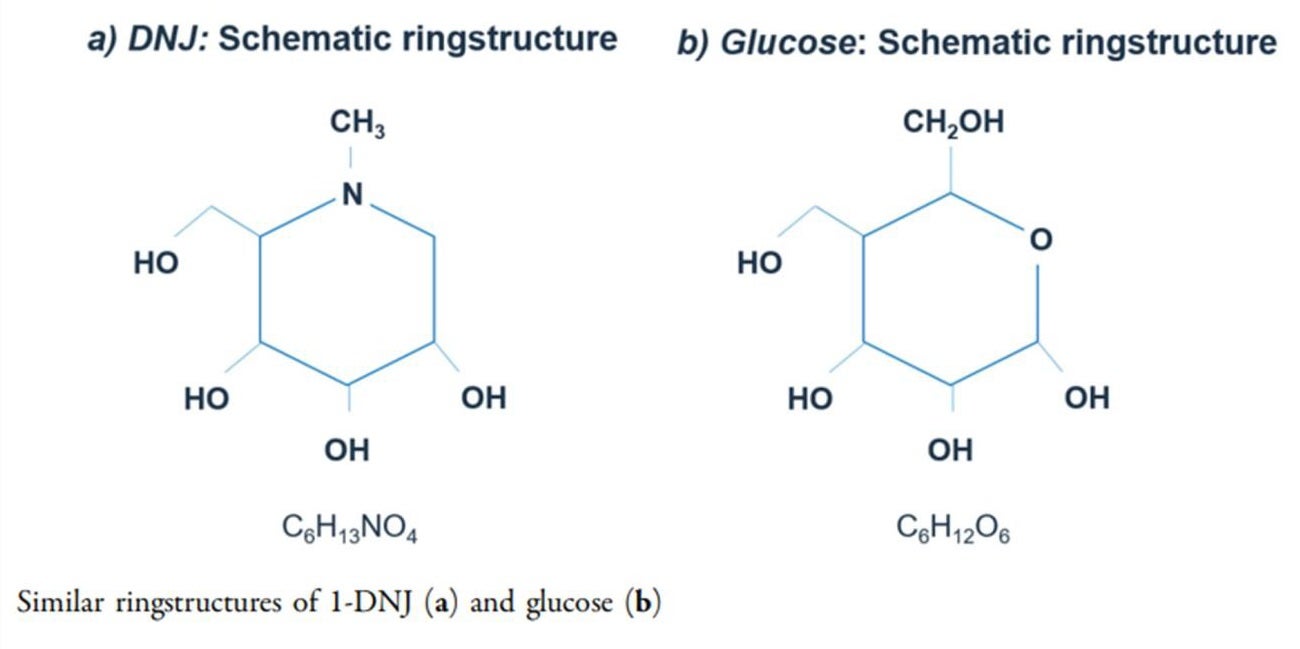
Anti-Diabetes Medication: Clinical Evidence Supporting MLE
Several clinical studies provide evidence for MLE’s efficacy. Let’s take a closer look at the following three clinical trials on the use of MLE in healthy and individuals with diabetes for better post-meal blood glucose control.
1. A randomized, double-blind, placebo-controlled study by Thondre et al.
The study involved 38 healthy individuals who consumed MLE to test its effect on glycemia and insulin parameters. The healthy individuals were randomly assigned either 75g of sucrose + 250mg of Reducose® (MLE group), or 75g of sucrose alone (placebo group). MLE in this study resulted in a reduction in post-meal levels of glucose and of insulin. Figure 2 shows that the MLE group exhibited a reduction of 40% in maximum levels of glucose (p < 0.001), and a reduction of 41% in maximum levels of insulin (p < 0.001).3
MLE was well tolerated, and there were no adverse events.3

2. A controlled, randomized, double-blind clinical study by Kim et al
The study recruited 38 adults with prediabetes or impaired glucose tolerance (IGT) who were randomly assigned to receive MLE (18 mg of 1-deoxynojirimycin content, 5 g/day) or a placebo before a standard carbohydrate meal. Figure 3 shows that the MLE group exhibited lower postprandial spikes in glucose levels and improved action of insulin, which indicates its potential for improved glycemic control in patients with prediabetes.
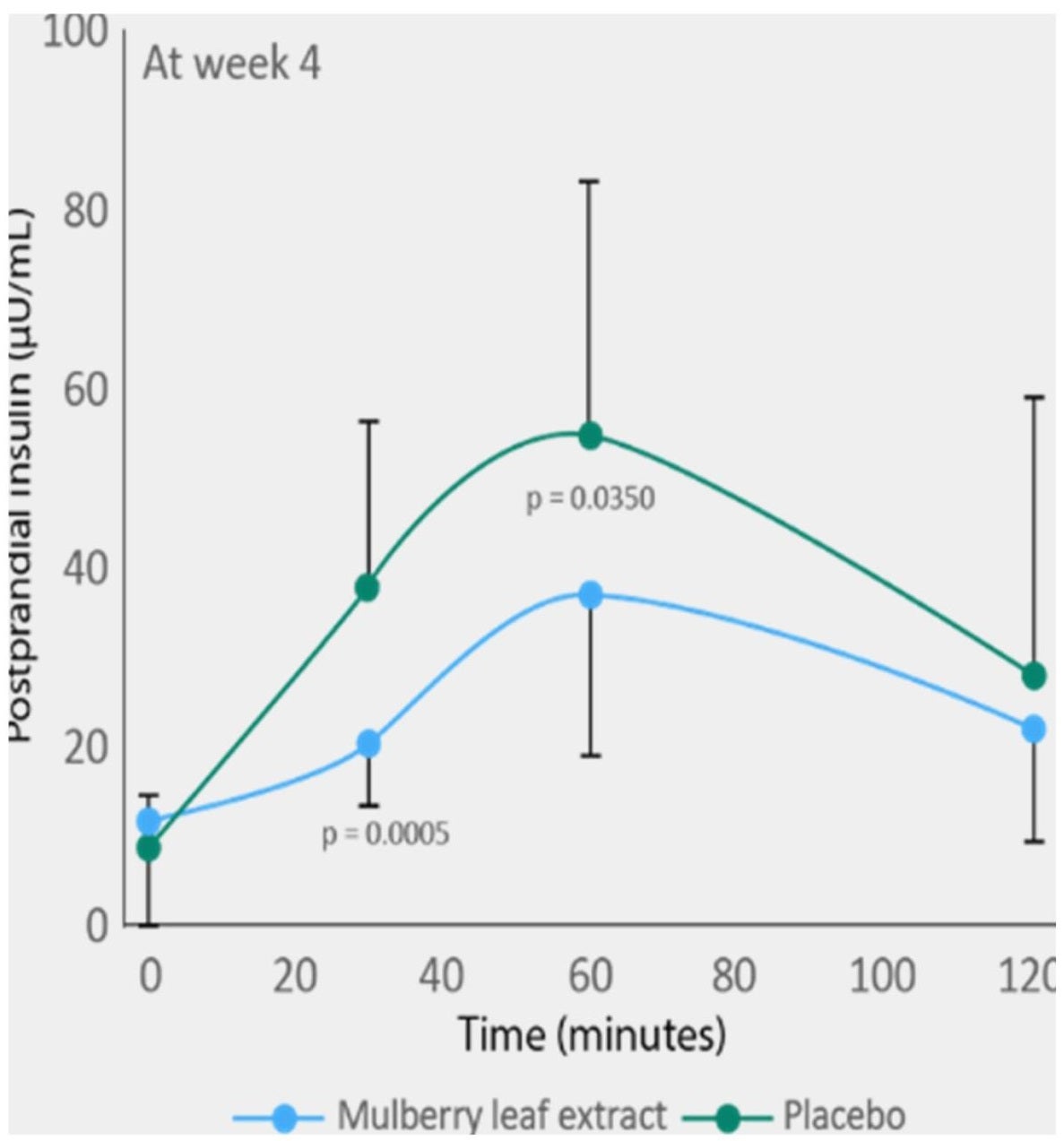

MLE was well tolerated, and there were no adverse events. The results prove the efficacy of MLE as a non-pharmacological treatment for managing blood sugar and which does not present any of the gastro-intestinal side effects seen with pharmacological medications.4
3- A crossover, placebo-controlled study by Mohamed et al.
This study included 30 T2D patients whose average age was 59 years and average HbA1c was 7.1%. The study compared the effects of a 2-g mixture of MLE, fiber, vitamin D3, and chromium on postprandial glycemia and on insulin responses in T2D. The T2D patients consumed a carbohydrate meal of 55.4 g of carbohydrates after either the MLE mixture or a placebo. The researchers measured glucose, insulin, and incretin hormones post-meal over three hours.2
Important Findings
Glucose Reduction: As shown in figure 4, the MLE blend resulted in a post-meal glucose AUC reduction of 20% for an hour and a reduction of 15% for a period of three hours. Cmax of glucose was reduced by 0.8 mmol/L relative to a placebo.2

(AUC: area under the curve; Glu: glucose; Ins: insulin; MLE: mulberry leaf extract; ns: not significant; PBO: placebo; SD: standard deviation; SE: standard error of the mean; vs: versus.)
Insulin Reduction: As shown in figure 5, early insulin response within an hour post-meal (iAUC, a decrease of 24%) reflected the decrease in gastrointestinal absorption of glucose.2
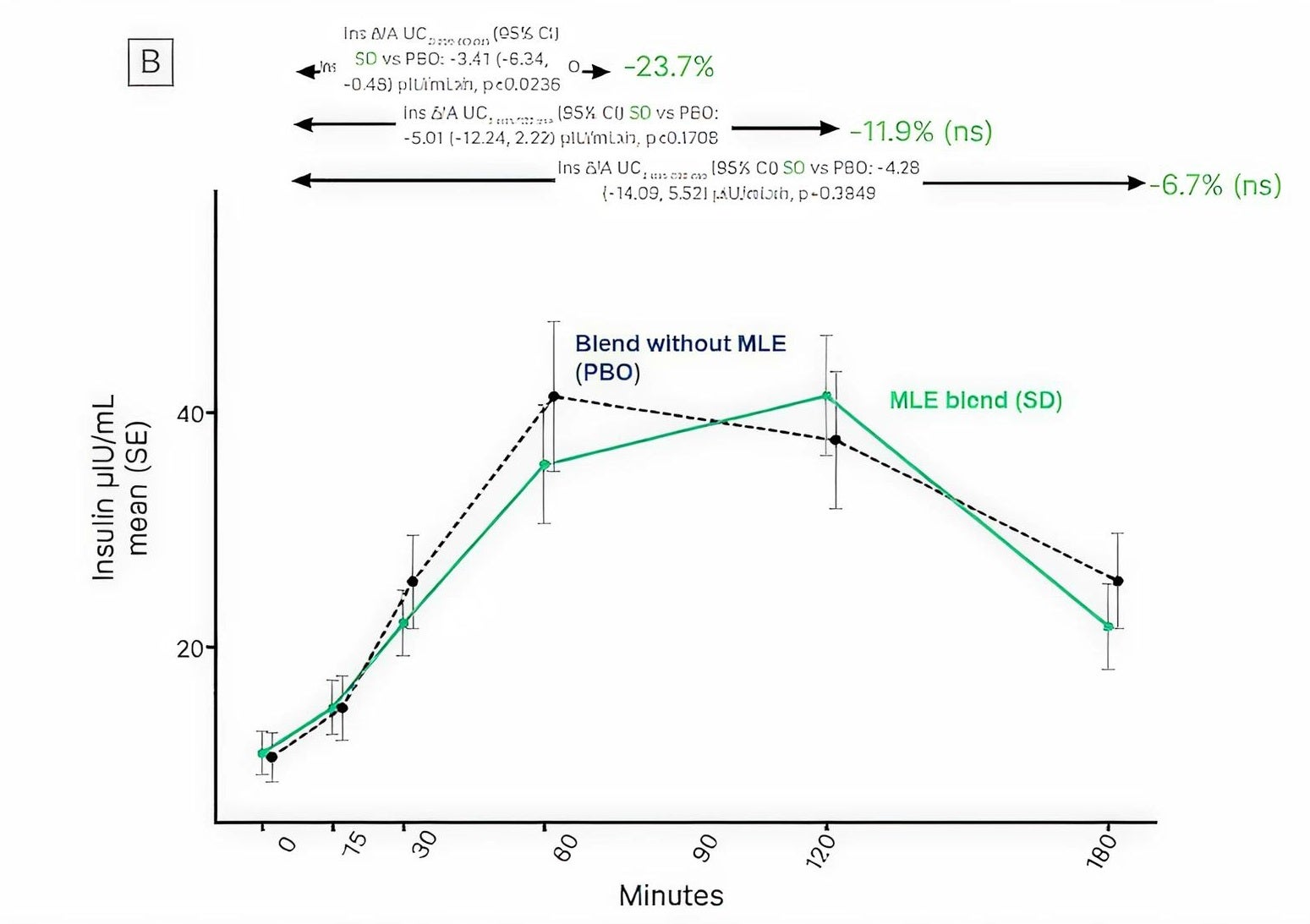
(AUC: area under the curve; Glu: glucose; Ins: insulin; MLE: mulberry leaf extract; ns: not significant; PBO: placebo; SD: standard deviation; SE: standard error of the mean; vs: versus.)
The GIP response exhibited a marked reduction, which can be indicative of improvements in glucose metabolism.2
MLE Safety and Tolerability
The tolerance and safety of MLE blend, in combination with fiber, vitamin D, and chromium, were well tolerated and proven to be safe in T2D patient. There were no adverse events, and lab results showed its safety. The adverse event encountered in the Mohamed et al. study was just fatigue in one patient, which resolved in four days.2 Compared to other carbohydrate absorption inhibitors, MLE blend didn't result in gastrointestinal intolerance and hypoglycemia, making it a safer and natural alternative. In contrast pharmacological medications, such as α-glucosidase inhibitors, exhibit gastrointestinal adverse events including abdominal pain, flatulence, and diarrhea. While another type of glucose lowering medication, GLP-1 receptor agonists, can result in nausea, diarrhea, pancreatitis, and injection-site reactions.5,6
Why Choose MLE as a Natural Diabetes Medicine?
MLE is a natural diabetes medicine with a unique mechanism of action by which MLE inhibits carbohydrate absorption. MLE's efficacy is clinically proven in reducing postprandial glucose (PPH) and insulin response and has a good safety profile. It is important to note that MLE does not have any of the side effects seen with pharmaceutical alpha-glucosidase inhibitors. For purposes of comparison, cinnamon, another natural ingredient, has shown inconsistent evidence and no impact on PPH, despite being well-studied.7,8 In a similar regard, there have been a few studies on blueberries, which have indicated there is no impact on PPH.9
Final Thoughts
For physicians, MLE supplement is a proven non-pharmacologic diabetes therapy that can complement other diabetes treatments. It is a patient-friendly supplement that addresses unmet needs for PPH control, particularly in Asian populations with high carbohydrate diets. The MLE-based dietary blend is an evidence-based natural treatment for managing PPH in T2D.
References:
- Kimura T, et al. J Agric Food Chem. 2007;55(14):5869–74.
- Mohamed M, et al. Diabetes Ther. 2023;14(12):2713–25.
- Thondre PS, et al. Nutr Metab (Lond). 2021;18(1):52.
- Kim JY, et al. J Med Food. 2015;18(3):306–13.
- Chiasson JL, et al. JAMA. 2003;290(4):486–94.
- Trujillo JM, et al. Ther Adv Endocrinol Metab. 2015;6(1):19–28.
- Sharma S, et al. J Pak Med Assoc. 2020;70(11):2065–9.
- Leach MJ, et al. Cochrane Database Syst Rev. 2012;2012(9):CD007170.
- Palma X, et al. Nutrients. 2021;13(5):1458.
A natural diabetes medicine, Mulberry Leaf Extract, is rich in 1-deoxynojirimycin. MLE is a non-pharmacological and evidencebased diabetes therapy thanks to its unique mechanism of action. MLE inhibits glucose absorption and carbohydrate digestion. As a result, MLE slows glucose absorption and reduces post meal glycemia and insulin spikes. Find out about MLE s evidence-based efficacy in T2D patient outcomes.
